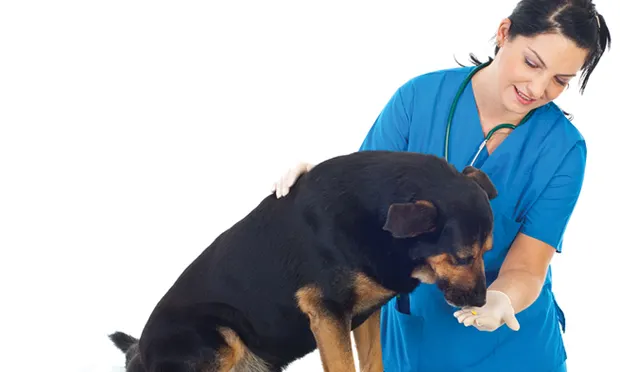Aspirator Bulbs for Puppy Resuscitation

Puppies delivered by cesarean section can be affected by respiratory distress syndrome. Removal of amniotic fluid is the first step toward successful resuscitation. Various methods have been described, including rocking the puppy in an arc with its head and neck stabilized in cupped hands, but neonatal resuscitation via swinging is dangerous and may induce significant brain trauma by cerebral hemorrhage. This study evaluated 2 additional methods for removing mucus and fluids from nostrils of puppies delivered by cesarean section. In the first, a plastic syringe mount was attached to a 1-mL syringe; the mount was placed into each nostril and air suctioned out. This method was practical in 62 of 78 puppies; fluid was removed in 50 puppies. Bleeding was observed in 4 puppies but possibly because of their small size. The second method involved compressing the ball of a nasal aspirator, placing it close to the nostril, and removing the compression so that air was suctioned out. This method was successful in all neonates and was reported by the authors to be 100% efficient in fluid removal. Use of the aspirator bulb, which is easy to clean and inexpensive, was superior and recommended.
CommentaryFluid removal from nostrils, mouth, and pharynx of neonatal puppies is an important component of resuscitation. A nasal aspirator may remove fluid from the nostrils without causing intranasal bleeding. A suction device attached to a syringe can be the best choice for fluid removal from the mouth and pharynx. Strict attention must be given to sterilizing all devices, especially those with a small orifice (eg, soft nasal aspirator). Swinging puppies to move fluid cranially is not recommended. A review of physical and chemical methods of neonatal resuscitation is useful.1—Margaret V. Root Kustritz, DVM, PhD, DACT
SourceNew method for removing mucus from the upper respiratory tract of newborn puppies following caesarean section. Goericke-Pesch S, Wehrend A. VET REC 170:289, 2012.
1. Resuscitation of canine and feline neonates. Traas AM. Theriogenology 70:343-348, 2008.